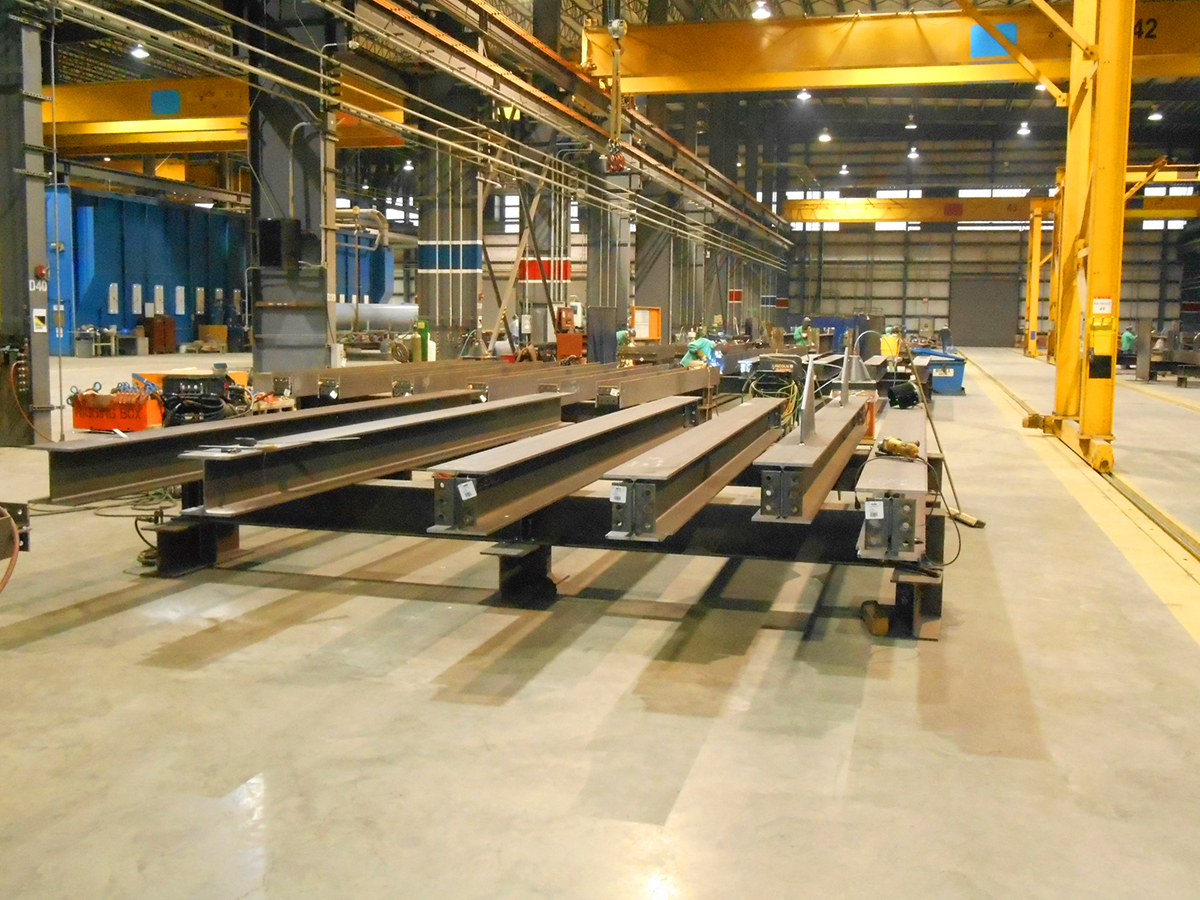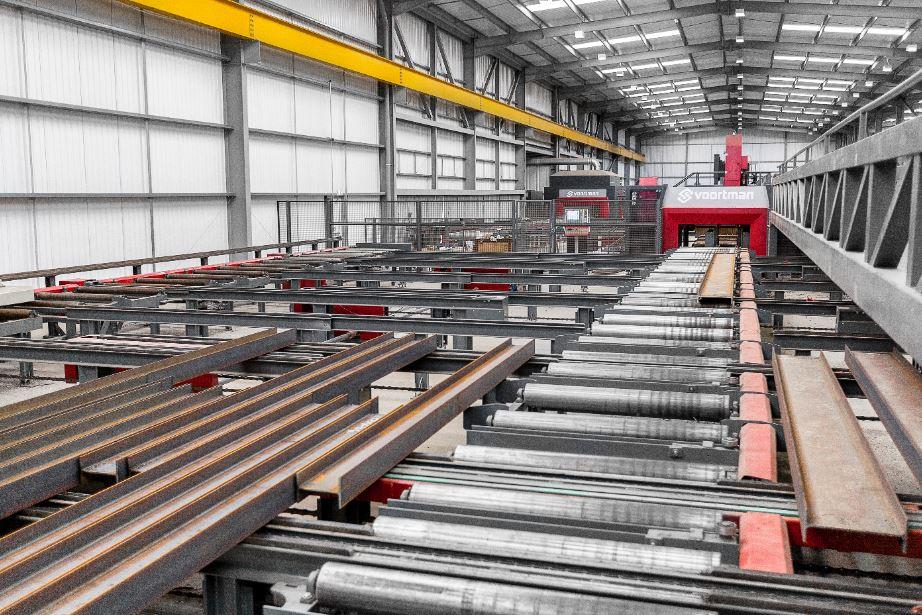Alpha Reo: Blazing A Trail in Reinforced Steel Solutions
Alpha Reo: Blazing A Trail in Reinforced Steel Solutions
Blog Article
Comprehensive Analysis of Cutting-Edge Techniques in Steel Fabrication Market
As the steel fabrication market proceeds to progress, the combination of advanced techniques has become essential for remaining affordable and meeting the demands of modern-day production standards. In this dynamic industry where modern technology plays a crucial role, understanding the subtleties of these innovative techniques is not just an alternative however a necessity for those looking to build in advance in the ever-evolving world of steel manufacture.
Laser Reducing Developments
In the world of steel construction, laser reducing advancements have actually changed the precision and efficiency of metal shaping processes. By taking advantage of the power of concentrated laser light beams, makers can currently accomplish exceptional degrees of accuracy when cutting with different kinds of metals. This modern technology allows detailed designs to be implemented with minimal product waste, making it an affordable service for sectors needing high precision components.
Among the vital benefits of laser cutting is its capability to take care of a variety of products, including stainless steel, aluminum, and carbon steel, with simplicity. The process produces tidy, burr-free edges, eliminating the demand for extra completing steps. The non-contact nature of laser reducing lowers the risk of product contamination, resulting in greater high quality end items.
Additionally, laser cutting machines can be configured to make swift, accurate cuts, considerably reducing manufacturing time compared to typical cutting approaches. This speed and precision make laser reducing specifically ideal for mass production settings where performance is critical. As innovation continues to advancement, laser cutting is positioned to play a significantly vital role in the steel manufacture market.

CNC Machining Innovations
The development of CNC machining modern technologies has ushered in a new period of precision and efficiency in the steel fabrication industry. Computer Numerical Control (CNC) equipments have actually revolutionized steel fabrication by supplying unrivaled precision and repeatability in the manufacturing process. steel fabrication melbourne. Among the vital innovations in CNC machining is the assimilation of sophisticated software application systems that allow real-time surveillance and modifications, leading to enhanced productivity and quality assurance
Additionally, the development of multi-axis CNC makers has actually enabled the construction of intricate steel parts with intricate layouts that were previously testing to create. These makers can do a broad range of machining procedures, including milling, boring, transforming, and grinding, all with high levels of precision.
Additionally, the consolidation of automation and robotics in CNC machining has structured manufacturing procedures, reduced lead times, and reduced the margin of mistake. This integration of sophisticated modern technologies not only improves effectiveness but additionally guarantees constant top quality across all produced steel components. In conclusion, CNC machining advancements proceed to drive innovations in the steel manufacture industry, setting new criteria for accuracy and efficiency.
Automated Welding Technologies
Automated welding technologies have changed the steel fabrication industry, enhancing performance and accuracy in the welding process. These innovative technologies utilize computer-controlled systems to automate the welding process, causing greater performance degrees and enhanced weld top quality. One of the key advantages of automated welding is the ability to execute intricate welds with consistent precision, minimizing the chance of errors and rework.
Robotic welding systems are at the forefront of automated welding modern technologies, using unequaled speed and accuracy. These systems can manage a wide variety of welding jobs, from easy to detailed, easily (steel fabricators melbourne). By using advanced sensing units and software, robotic welders can adapt to variations in product and joint geometry, making certain an attire and dependable weld
Moreover, automated welding modern technologies improve work environment safety and security by decreasing the exposure of human welders to dangerous fumes and intense warm. As the steel manufacture market proceeds to develop, integrating automated welding technologies will be necessary for business wanting to remain competitive and meet the expanding needs for high-grade welded products.
Robotics Combination in Construction
Utilizing robot systems in fabrication procedures has ended up being a crucial technique for boosting efficiency and accuracy in modern-day production environments. Robotics assimilation in steel manufacture supplies a myriad of benefits, including raised performance, improved quality control, and boosted security steps. These sophisticated robotic systems are outfitted metal fabrication melbourne with advanced sensors and shows abilities, permitting them to execute intricate jobs with a high degree of precision and repeatability.
Among the key benefits of robotics combination in steel fabrication is the capacity to automate repetitive jobs, such as product handling, cutting, welding, and assembly processes. This not only accelerates manufacturing cycles but additionally reduces the risk of human mistake, resulting in greater total item high quality. Additionally, robotics can run 24/7, dramatically improving production result and meeting limited task target dates.

3D Printing in Steel Manufacturing
Having actually changed the steel construction market with robotics integration, the growing exploration of 3D printing in steel manufacturing is poised to more advancement the world of modern manufacturing strategies. 3D printing, likewise called additive manufacturing, provides unprecedented layout freedom and intricacy, allowing the production of intricate steel structures that were previously unattainable via typical production approaches. By utilizing computer-aided design (CAD) software, suppliers can precisely manage the layer-by-layer deposition of steel product, causing components with enhanced geometries and functionalities.
Among the vital benefits of 3D printing in steel manufacturing is its capability to minimize material waste substantially. Unlike subtractive production procedures where excess product is trimmed away, 3D printing only makes use of the necessary amount of steel required for the last part. This efficiency not just causes cost savings yet additionally lines up with lasting production practices by minimizing ecological influence.
In addition, 3D printing allows quick prototyping and modification, enabling for the production of small batches of intricate steel elements with short lead times. As the modern technology remains to develop and end up being extra easily accessible, its integration right into mainstream steel construction processes is expected to drive technology and performance throughout the industry.
Conclusion
To conclude, the steel fabrication sector has seen significant innovations in methods such as laser cutting, CNC machining, automated welding, robotics assimilation, and 3D printing. These sophisticated technologies have transformed the way steel products are made, causing enhanced performance, precision, and cost-effectiveness. Proceeded financial investment in these innovative techniques is crucial for the market to remain competitive and fulfill the needs of modern production processes.
As the steel manufacture industry continues to advance, the combination of cutting-edge methods has actually ended up being important for remaining competitive and satisfying the needs of modern-day manufacturing requirements.One of the vital benefits of laser cutting is its capacity to handle a vast variety of materials, consisting of stainless steel, light weight aluminum, and carbon steel, with convenience.Automated welding technologies have changed the steel manufacture sector, boosting performance and accuracy in the welding procedure.Having transformed the steel fabrication industry through robotics combination, the expanding exploration of 3D printing in steel manufacturing is poised to further breakthrough the world of modern manufacturing techniques.In conclusion, the steel fabrication market has seen significant improvements in techniques such as laser cutting, CNC machining, automated welding, robotics integration, and 3D printing.
Report this page